Biden Admin Proposes Minimum Standards for EV Charging

With the Biden administration hoping to transition the United States toward all-electric vehicles, it has set a goal of commissioning the construction of a nationwide network of 500,000 EV charging stations by 2030. But saying you’re going to do something as part of a $1-trillion infrastructure plan is a lot easier than actually doing it because there are a lot of steps that have to be taken before a plan can effectively be put into action. This is called planning and it’s something the government occasionally engages in to ensure a program is successful. As such, the Biden administration is issuing a series of standards and requirements for federally funded electric vehicle charging stations.
“To support the transition to electric vehicles, we must build a national charging network that makes finding a charge as easy as filling up at a gas station,” said U.S. Transportation Secretary Pete Buttigieg. “These new ground rules will help create a network of EV chargers across the country that are convenient, affordable, reliable and accessible for all Americans.”
The Department of Transportation, in partnership with the Department of Energy, is proposing new standards that the White House claimed would “make charging electric vehicles (EVs) a convenient, reliable, and affordable for all Americans,” including those wanting to take their battery-powered automobile on longer trips. But it added that chargers would be less reliable, fail to work for all vehicles, and lack common payment methods if “strong standards” were not imposed.
The White House also claimed that the broader initiative would create loads of good-paying jobs for steelworkers, electricians, and laborers that would need to construct and maintain the vast network. Though the press release immediately refocused on tackling the climate crisis, stating that EV adoption meant lessened emissions, cleaner air, and advancing the President’s Justice40 Initiative – which seeks to give federal agencies more direct oversight of state-level decisions so that the government can “advance environmental justice and spur economic opportunity for disadvantaged communities.”
The U.S. Transportation Department’s Federal Highway Administration said the proposed rule is expected to be published in the Federal Register next week. Any final rules are likely to be published after public comments are reviewed. However, we can already get a sense of what might be coming based on the surrounding rhetoric coming out of the White House.
Most of the text used in the press release was spent praising the spending bill that got us here ( specifically the $7.5 billion carved out for the charging network), subsequent investments from private companies, new policies designed to make the federal fleet all-electric by 2027, and promises that the construction of the stations would be conducted in a manner that would impact both urban and rural communities. But the White House also praised like-minded businesses and unions that have similarly committed themselves to an all-electric future by 2030.
After that, we start getting into the meatier bits:
The $7.5 billion for EV charging infrastructure in President Biden’s Bipartisan Infrastructure Law will build a convenient and equitable charging network through two programs. The National Electric Vehicle Infrastructure (NEVI) program will provide $5 billion in formula funding to States to build out charging infrastructure along highway corridors – filling gaps in rural, disadvantaged, and hard-to-reach locations while instilling public confidence in charging. Today’s minimum standards and requirements will guide States on how to spend federal funds in a way that makes chargers function the same from state-to-state, easy to find, use, and pay for, no matter who operates chargers. The Bipartisan Infrastructure Law also provides $2.5 billion in competitive grants to support community and corridor charging, improve local air quality, and increase EV charging access in underserved and overburdened communities. DOT will open applications for this program later this year.
These federal charging programs were designed to catalyze additional private sector investments that complement the build-out of a user-friendly, cost-saving, and financially sustainable national EV charging network. Together, President Biden’s leadership is mobilizing public and private charging investment to accelerate the adoption of EVs and create good-paying jobs across manufacturing, installation, and operation. These chargers will also make sure the new renewable electricity sources like solar and wind can power the cars we drive and reduce energy costs for families.
The above treads a lot of familiar ground. In fact, almost every paragraph in the White House release makes some mention of circumventing high energy costs and ensuring good-paying jobs. But the big takeaway is that the government is counting on the private sector to swoop in and actually make this happen. It’s something that seems plausible, considering how much the automotive sector and energy concerns talk about this kind of stuff. Though the federal government still wants to be heavily involved in the process and effectively direct how things are managed while subsidizing aspects of the program.
An additional $65 billion has been set aside to upgrade the national grid. That’s probably not a bad idea even if the U.S. government wasn’t interested in pushing EVs. But it’s likely mandatory if there’s any chance of avoiding routine brownouts when millions of vehicles charge after work during peak load. Elon Musk previously speculated that the energy consumption of EVs would effectively require every nation to bolster its grid if they were to become mainstream products. Though engineers have long been warning that the proliferation of all-electric vehicles would require increased energy production.
Of the $7.5 billion earmarked for the chargers, the law has $5 billion slated for states to build their own charging networks and $2.5 billion for local grants designed to support access to EV charging in “rural areas and disadvantaged communities.” States will have until the beginning of August to submit their EV infrastructure deployment plans to the joint office. From there, the office will have to decide which ones it likes and how to best distribute the funding.
The Biden administration also used Thursday to announce the formation of a new “EV Working Group.” While the details on the organization are rather vague (something that plagued the Disinformation Governance Board), the White House said it would exist as part of the newly formed Joint Office of Energy and Transportation and feature 25 hand-pick members that haven’t yet been selected. Its stated purpose was to serve as an advisory body to “make recommendations regarding the development, adoption, and integration of light-, medium-, and heavy-duty electric vehicles into the transportation and energy systems of the United States.” Something similar is being plotted to help the Parks Service transition to all-electric fleets.
Another subgroup is also being formed under the Department of Defense (beneath the Senior Pentagon Climate Working Group). While I haven’t the faintest clue why the organization is tied to the DOD, that group’s stated reason for being is to focus “solely on removing barriers to installing EV charging infrastructure that supports the Department’s zero-emission vehicle acquisition goals.”
Apparently, the Department of Defense is also all-in on electric vehicles.
As for the charging standards themselves, the government is looking to have rules that would establish EV stations every 50 miles and ideally within a mile or so of the interstate. The stations themselves would be required to have at least four 150-kilowatt DC fast charging points to avoid long wait times. Such hubs would also be required to utilize the same software between states and data submissions to create a database of public EV charging. The government has likewise said connectivity is a must so that remote monitoring and diagnostics can take place. The limits of this were not specified, though I would wager they probably won’t be. All the companies building these stations and cars want as much data as they can hoover up and the federal government will be no different. On the upside, perpetual monitoring of these systems could help with maintenance – something EV charging stations have had a serious problem with.
Stations would need to be standardized, with the Department of Transportation stating that it would be illegal to have charging limited to memberships. This presumably means Tesla would have to open its charging network to everybody (like it did in Europe) or face more opposition from the federal government. Ironically, a recent study actually suggested Tesla’s chargers are more reliable than their public counterparts for that very reason.
“It ensures the charging stations funded under these programs can serve a broad range of vehicles, including best-selling models from Ford, GM and more automakers,” stated Buttigieg. “And it sends a market signal toward a standard charging port for stations to accommodate the widest possible set of vehicles and accommodate the adapters for all vehicles.”
The amount of changes currently taking place within the federal government to help facilitate this is nothing short of staggering. Not only is the White House trying to standardize and fund the construction of half a million charging stations to spur electric vehicle adoption, but it’s also establishing pro-EV committees for practically every department in the country. But if you ask anyone involved, it’s all for the best and is sure to result in a utopian future for all by 2030.
“We’re tackling range anxiety and vehicle charging deserts by making sure that charging stations are easily and equally accessible, allowing every American can get coast to coast in an electric vehicle,” said U.S. Secretary of Energy Jennifer M. Granholm. “The investments made possible by the Bipartisan Infrastructure Law will not only build an interconnected national charging network, but also boost local economies and strengthen our independence from the volatilities of fossil fuels.”
[Images: U.S. Department of Transportation/DOT]

A staunch consumer advocate tracking industry trends and regulation. Before joining TTAC, Matt spent a decade working for marketing and research firms based in NYC. Clients included several of the world’s largest automakers, global tire brands, and aftermarket part suppliers. Dissatisfied with the corporate world and resentful of having to wear suits everyday, he pivoted to writing about cars. Since then, that man has become an ardent supporter of the right-to-repair movement, been interviewed on the auto industry by national radio broadcasts, driven more rental cars than anyone ever should, participated in amateur rallying events, and received the requisite minimum training as sanctioned by the SCCA. Handy with a wrench, Matt grew up surrounded by Detroit auto workers and managed to get a pizza delivery job before he was legally eligible. He later found himself driving box trucks through Manhattan, guaranteeing future sympathy for actual truckers. He continues to conduct research pertaining to the automotive sector as an independent contractor and has since moved back to his native Michigan, closer to where the cars are born. A contrarian, Matt claims to prefer understeer — stating that front and all-wheel drive vehicles cater best to his driving style.
More by Matt Posky
Latest Car Reviews
Read moreLatest Product Reviews
Read moreRecent Comments
- Orange260z I'm facing the "tire aging out" issue as well - the Conti ECS on my 911 have 2017 date codes but have lots (likely >70%) tread remaining. The tires have spent quite little time in the sun, as the car has become a garage queen and has likely had ~10K kms put on in the last 5 years. I did notice that they were getting harder last year, as the car pushes more in corners and the back end breaks loose under heavy acceleration. I'll have to do a careful inspection for cracks when I get the car out for the summer in the coming weeks.
- VoGhost Interesting comments. Back in reality, AV is already here, and the experience to date has been that AV is far safer than most drivers. But I guess your "news" didn't tell you that, for some reason.
- Doc423 Come try to take it, Pal. Environmental Whacko.
- 28-Cars-Later Mazda despite attractive styling has resale issues - 'Yota is always the answer.
- 28-Cars-Later Try again.




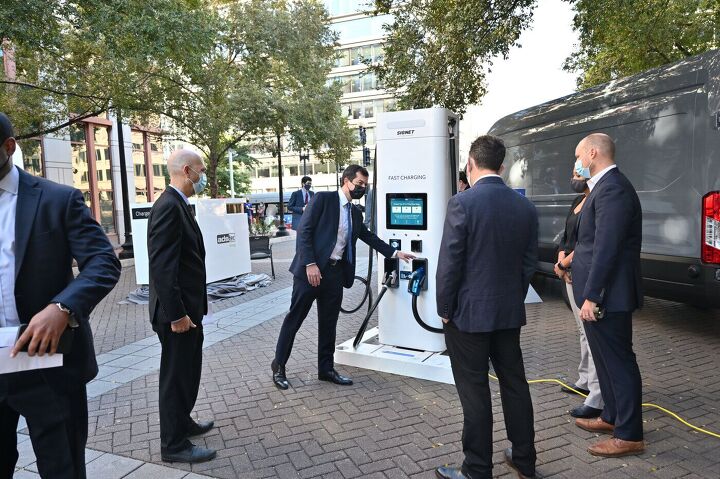












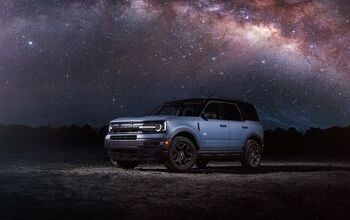

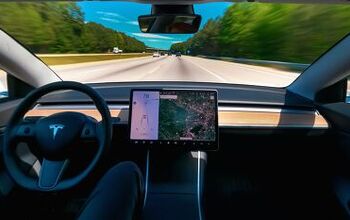


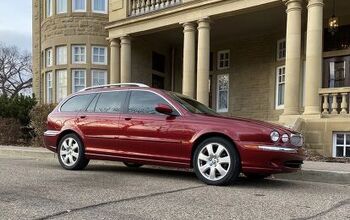


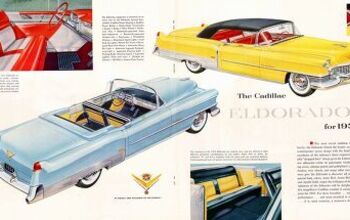



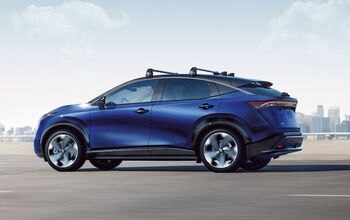

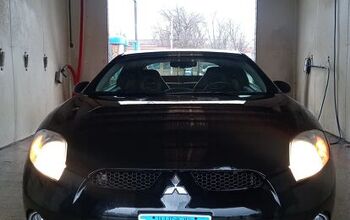


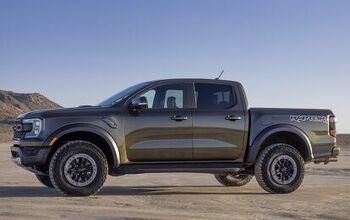
Comments
Join the conversation
Transient Plasma Systems is working on a new advanced ignition system that could replace traditional spark plugs in gasoline engines. This could reduce emissions and improve the efficiency of internal combustion engines by as much as 20%.
Ignoring the Truthiness About Politix aspects....and I get being conservative but your last president wasn't anything to be proud of. One of the problems we see in many areas is proprietary lock in. This is why it is cheaper to move money by text in Africa than it is here in the US where 3.5 credit card companies own the space and you cannot escape. Every electric maker would like to have the proprietary plug, and make the whole world use theirs with perpetual royalty....but EV space requires ONE plug, or at least agreement and open source on the plugs used. Using phones as an example, Apple Lightning phone plug is what each maker wants, so to speak, but USB-C is how that market should go. Some times rent seeking isn't the way. This is one place a national standard would make a lot of sense instead of some stupid VHS v Betamax war. Mods, can we somehow delete the political nonsense. I got Twitter for that.